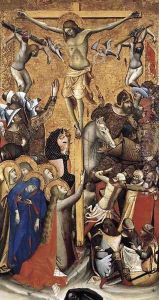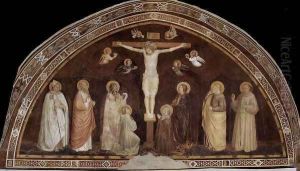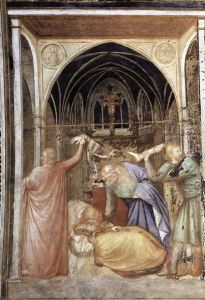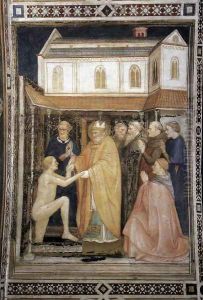Puccio Capanna Paintings
Puccio Capanna was an Italian painter of the early Renaissance, a period marked by significant developments in art, culture, and society in Europe. Born around the year 1300, Capanna was closely associated with the city of Assisi in the Umbria region, an area known for its rich artistic traditions and as the birthplace of St. Francis, whose life and teachings would profoundly influence Capanna's work. While specific details about his early life and training are scarce, Capanna is believed to have been a pupil or follower of Giotto di Bondone, one of the most prominent artists of the time, known for his revolutionary approach to painting, particularly in the representation of human emotions and the use of perspective.
Capanna's oeuvre is primarily religious in nature, reflecting the deep spiritual fervor of the era and the influence of the Franciscan Order, which emphasized poverty, humility, and the imitation of Christ's life. His works are characterized by their devotional intensity, the expressive quality of the figures, and the use of vibrant color. Although much of Capanna's work has been lost or remains unidentified, he is credited with contributing to the frescoes in the Basilica of St. Francis in Assisi, a monumental project that depicts scenes from the life of St. Francis and the history of Christianity. These frescoes are celebrated for their narrative clarity and emotional depth, serving as a testament to the collaborative spirit of the period's artists.
Throughout his career, Capanna also worked in other cities in Italy, leaving behind a legacy that, while not as well-documented as that of his contemporaries, reflects the transitional nature of 14th-century Italian art. From the Byzantine iconography that dominated the Middle Ages to the more naturalistic and human-centered approach of the Renaissance, Capanna's paintings offer insights into the evolving artistic landscape of the time. He died around 1350, and while he may not have achieved the same level of fame as Giotto, his contributions to the development of Italian Renaissance art, particularly in the realm of religious fresco painting, remain significant. Capanna's work continues to be studied by art historians for its role in bridging the gap between medieval and Renaissance art, illustrating the gradual shift towards a more naturalistic representation of the world and its inhabitants.



